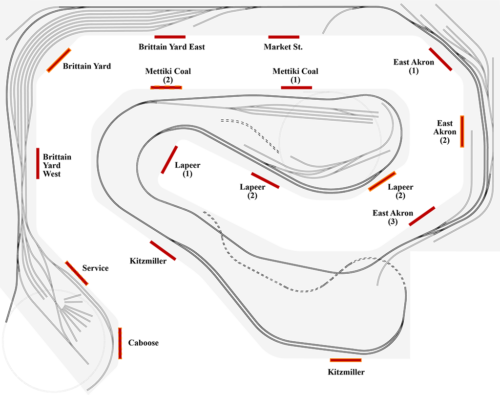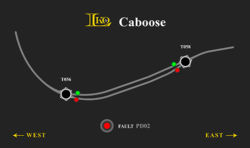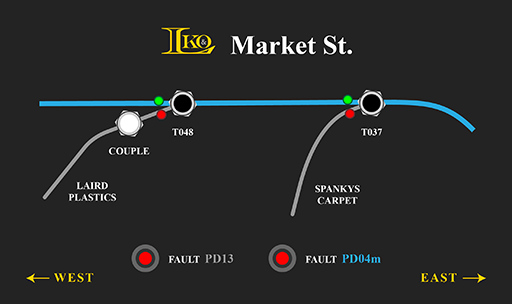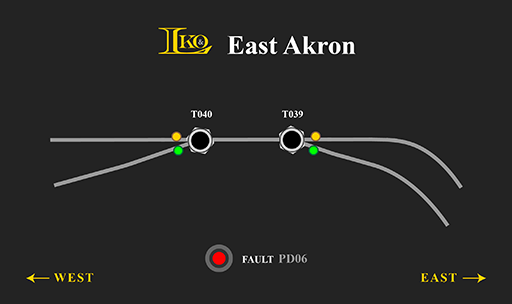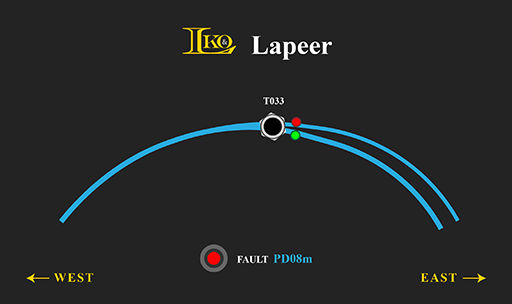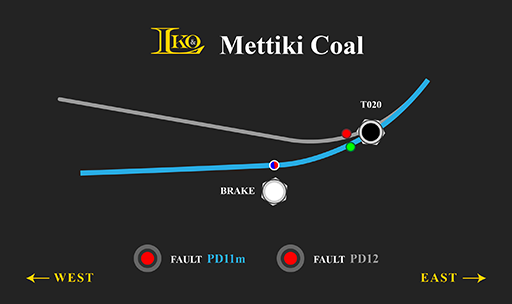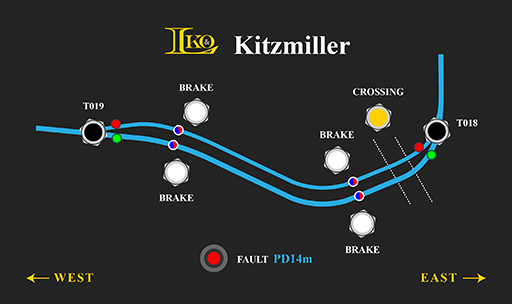Artwork is complete for the upper deck control panels. Here is a map to help orient you to their approximate locations on the layout (panel sizes on map not to scale):
Lapeer (2) and Kitzmiller are shown twice each because there will be two of the same panels in these areas.
Here are the panels in the order you would encounter them on the railroad as you move west to east.
The artwork bears out it will be practical to order a single size panel face from TAP Plastics. The smaller panels are simply one half a standard panel.
A few notes about the controls:
- 2 mm blue lines are the main
- 1.5 mm blue lines are sidings on the main
- 1.5 mm gray lines are spurs, yard, and industrial
- Black switches are track alignment (turnouts and roundtable)
- White switches are animation
- Yellow switches are grade crossing
- Green switches are track power
- Green/red LEDs are turnouts that must be returned to the normal position
- Green/yellow LEDs are turnouts that may be left in either position
OrangePink LEDs are turntable alignment- Red/blue flashing LEDs are friction brake on grades
- Red flashing LEDs are power district fault (breaker trip)
The grade crossing controls are there to enable/disable the crossing signals. The crossing signals will be automatic but with a push of a yellow button they can be silenced. The friction brake controls will engage/disengage a pop-up brush bristle to hold cars on the grade down into the Potomac River valley. More on both of these subjects later.
Time to order up the raw materials and get busy constructing panels!
PS Sorry Dave, I couldn’t find one uniform location for the titles that worked on every panel and that I liked the look. I did standardize a lot of item positions where possible. At least the vertical offsets all match.
UPDATE #1
Brittain Yard Service panel with additional track power controls as suggested by Arthur Armani. Thanks Arthur! The additions necessitated boundary of switched track power indications – little white lines.
UPDATE #2
I set out this evening to determine resistor values that would make each of the different LED colors appear the same brightness. That went easy enough. More on the results when I make a post about the internal PCBs for the panels. The reason for this second update is I noticed there wasn’t a great deal of color contrast between the red LEDs and the orange LEDs. There was a difference of course, but not as great a difference as I would like. Fortunately, I have white, blue, and pink LEDs on hand to pick from. White is the reserved color for animation and although a spinning turntable is animation, I would rather keep the turntable its own unique color. Blue is reserved for mainline even though there is currently no application for mainline LEDs. Yet. That left pink. While labeled as pink the LEDs are more of a light purple color. They look great and are very discernible from the other color LEDs on the panel. I updated the art to reflect this change.
